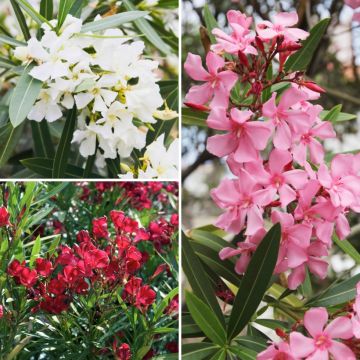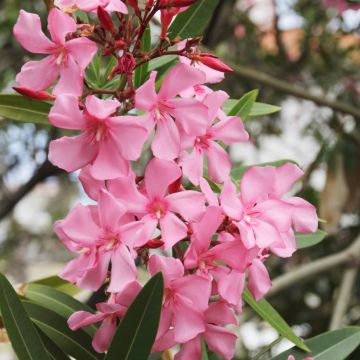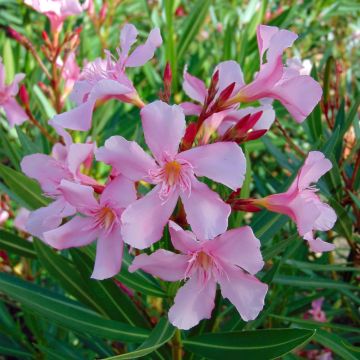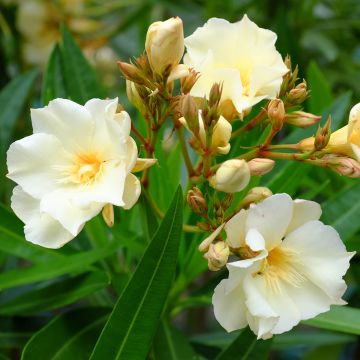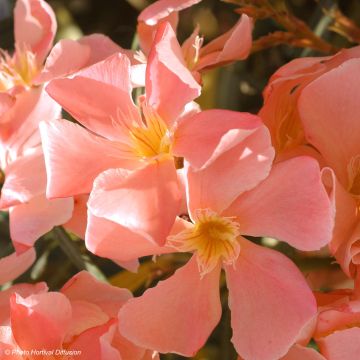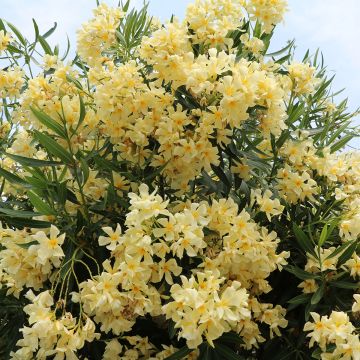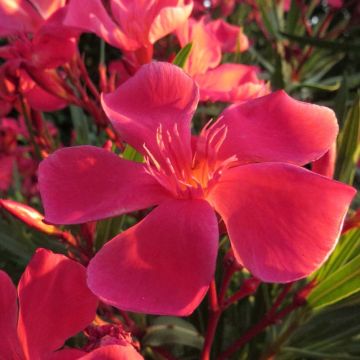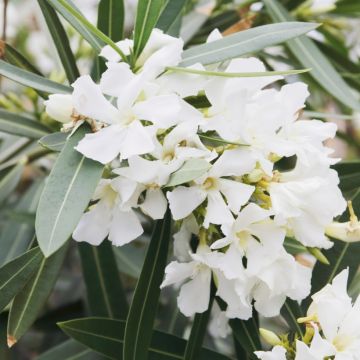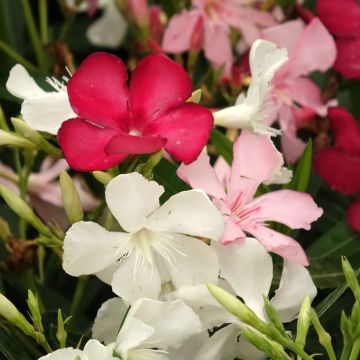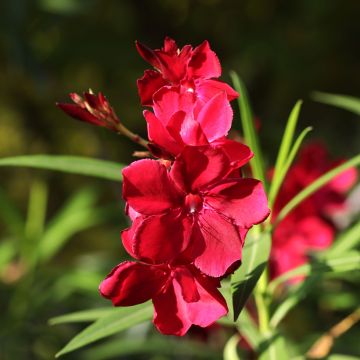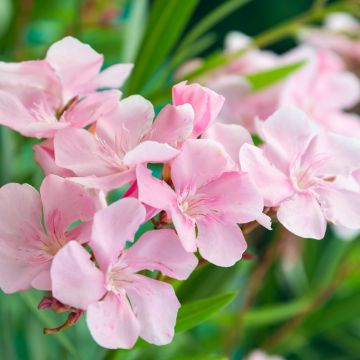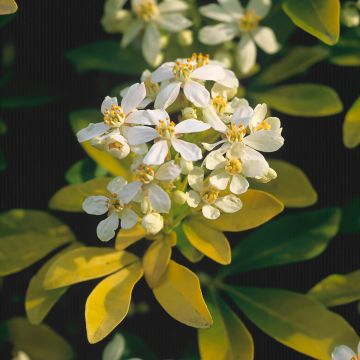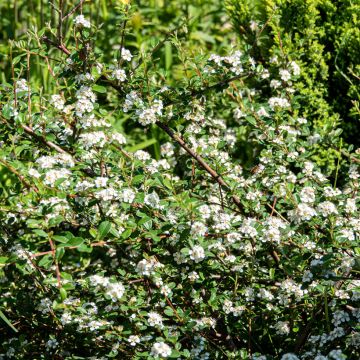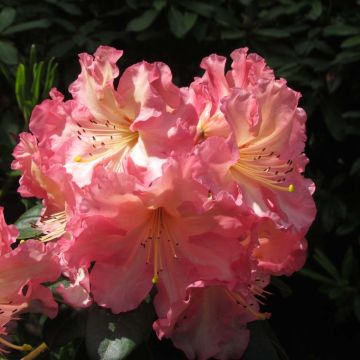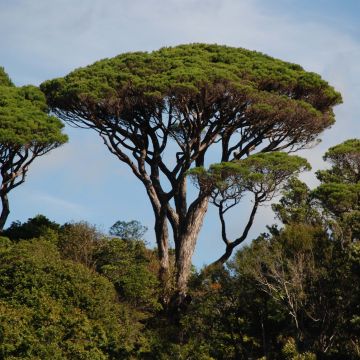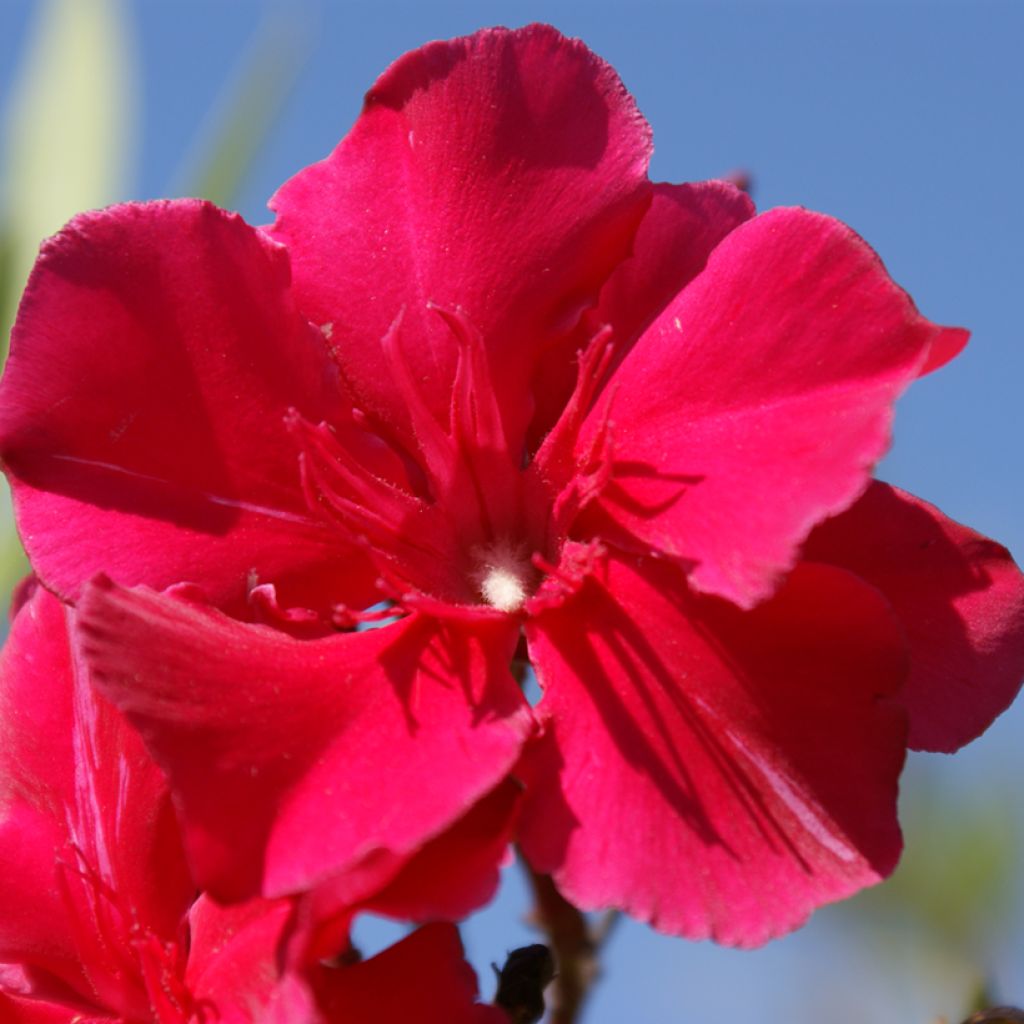

Nerium oleander Commandant Barthélemy - Rose Bay
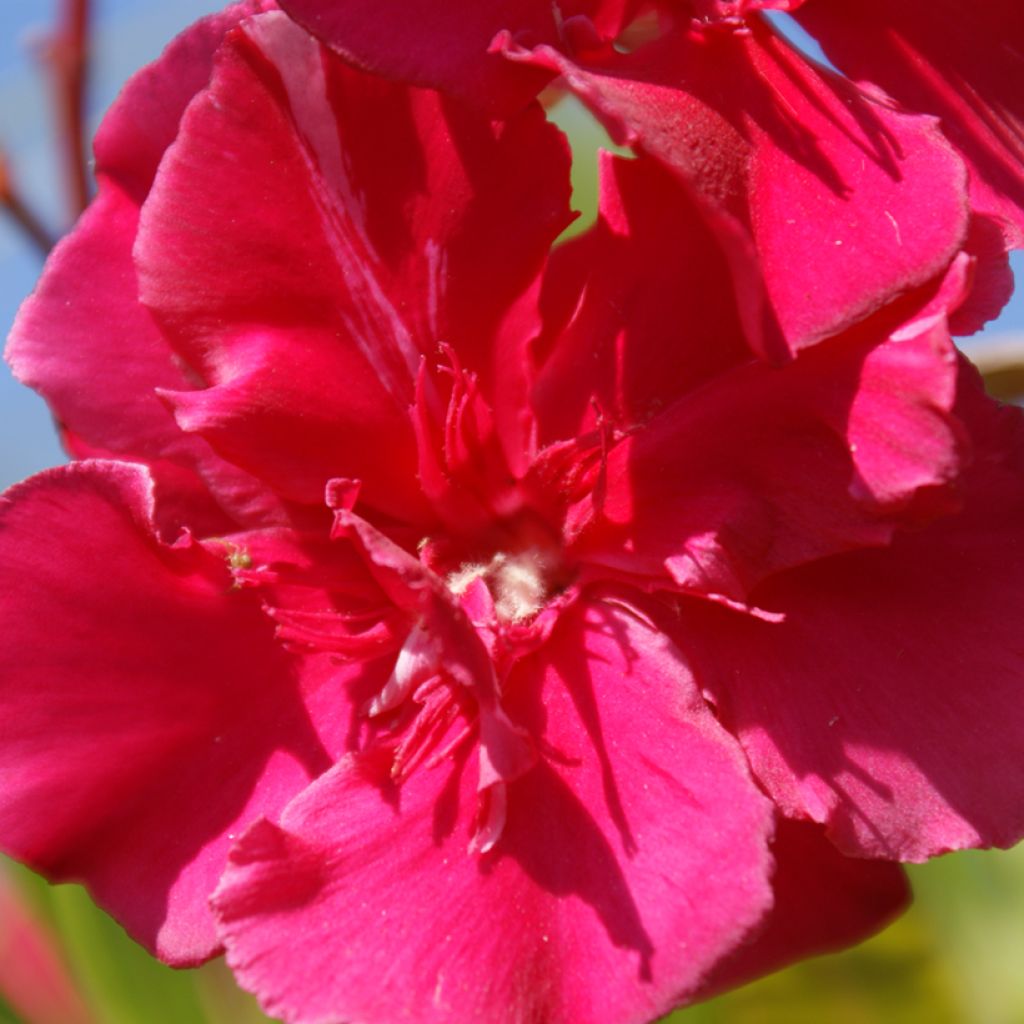

Nerium oleander Commandant Barthélemy - Rose Bay
Nerium oleander Commandant Barthélemy - Rose Bay
Nerium oleander Commandant Barthélemy
Oleander, Rose Bay
Thanks to the team (for the order preparation and shipping), the young plants received in buckets seem healthy to me. Planted in the ground, I am now patiently waiting for them to take root... or not?
Thierry, 06/02/2025
Special offer!
Receive a €20 voucher for any order over €90 (excluding delivery costs, credit notes, and plastic-free options)!
1- Add your favorite plants to your cart.
2- Once you have reached €90, confirm your order (you can even choose the delivery date!).
3- As soon as your order is shipped, you will receive an email containing your voucher code, valid for 3 months (90 days).
Your voucher is unique and can only be used once, for any order with a minimum value of €20, excluding delivery costs.
Can be combined with other current offers, non-divisible and non-refundable.
Why not try an alternative variety in stock?
View all →This plant carries a 24 months recovery warranty
More information
We guarantee the quality of our plants for a full growing cycle, and will replace at our expense any plant that fails to recover under normal climatic and planting conditions.

Would this plant suit my garden?
Set up your Plantfit profile →
Description
The 'Commandant Barthelemy' Oleander is a vigorous evergreen Mediterranean bush prized for its highly fragrant, double, red to pink flowers. This variety is extensively planted in mild coastal areas, especially as a large hedge. The bush is capable of blooming continuously throughout the summer if the soil does not dry out too much. It is undemanding and easy to grow in any well-drained soil, resistant to sea spray as well as drought. Planting it in the ground is only recommended in regions spared from severe frost. Elsewhere, grow it in a large pot to overwinter like a citrus tree.
The numerous cultivars of oleander available on the horticultural market are mostly hybrids between Nerium oleander subsp. oleander, which is native to the Mediterranean region, and Nerium oleander subsp. indicum, which is highly fragrant and widespread from Iran to China. Their flowers are single, double, or even triple, and come in a nearly infinite range of colours, from white to pink, yellow, salmon, red, and even mauve. Only blue is absent.
Nerium oleander 'Commandant Barthelemy' is a horticultural selection sometimes marketed under the name 'Géant des Batailles'. It is an evergreen bush of the apocynaceae family. It quickly and naturally forms a bushy, spreading, multi-stemmed shrub, with branches near the base and a generally rounded shape. This vigorous variety will reach an average height of 3.50m with a spread of 3m at maturity. Its flexible branches, covered with green then grey bark, bear long, persistent, thick, and leathery leaves, with a slightly bluish-green colour on the upper side and a lighter colour on the underside. They measure 10 to 15 cm long and 3 cm wide. In intense drought, the Nerium sheds some of its leaves, the oldest ones located at the base of the stems. Depending on the climate and soil dryness, flowering occurs in spring and early summer, then again from late summer to autumn or from July to October without interruption. The double flowers are composed of a tube that opens into light red petals, randomly streaked with white. They are gathered in pleasantly fragrant corymbs, mainly at the end of 1 or 2-year-old branches. This nectar-rich flowering is followed by long reddish pods that burst open when ripe, releasing a multitude of small seeds with a cluster of white bristles, dispersed by the wind. Be careful not to prune the oleander too severely: only stems that have reached a certain length bear flowers!
Nerium oleander is a resilient and generous plant, an excellent hedge plant by the seaside, but also a magnificent specimen to be planted alone in a hot location. Hardy down to -8/-10°C once well established, the 'Commandant Barthelemy' variety will grow without any problem in any well-drained soil. It can be used as a hedge, by regularly pruning it, combined with other evergreen shrubs such as Viburnum tinus, Photinia 'Carré Rouge', myrtles, Pittosporum tobira, and Phyllirea angustifolia 'Green Up'. In mild climates, it can be trained as a small tree by selecting the best stem and allowing it to branch out at a height of 1.50m or 2m from the ground. The resulting specimens are particularly ornamental but require a very mild winter that will not cause them to die back to the ground. On the terrace, this fragrant oleander will thrive in a large pot. This method allows the bush to be stored in a very bright, cool, frost-free location in colder regions.
The genus name, Nerium, is believed to come from its ancient Greek name, Nerion, derived from Nereus, a sea god in Greek mythology. Another interpretation links Nerium to neros, which means moist in Greek. The underlying liquid element in both interpretations is probably explained by the fact that the wild oleander never grows far from water. Its long roots anchor deeply in the soil to draw in moisture, even on the slopes of gorges or in the beds of dried-up rivers. As proof of its incredible drought resistance, in arid regions such as the Negev in Israel or the southern Anti-Atlas in Morocco, Nerium oleander is one of the few shrubs, along with Acacia and Retama (a type of broom), capable of withstanding the desert, anchored in the walls of ravines.
Report an error about the product description
Plant habit
Flowering
Foliage
Safety measures
Botanical data
Nerium
oleander
Commandant Barthélemy
Apocynaceae
Oleander, Rose Bay
Nerium Géant des Batailles
Cultivar or hybrid
ingestion
Cette plante est toxique si elle est ingérée volontairement ou involontairement.
Ne la plantez pas là où de jeunes enfants peuvent évoluer, et lavez-vous les mains après l'avoir manipulée.
Pensez à conserver l'étiquette de la plante, à la photographier ou à noter son nom, afin de faciliter le travail des professionnels de santé.
Davantage d'informations sur https://plantes-risque.info
Other Nerium - Oleander
View all →Planting and care
It is best to plant the 'Commandant Barthelemy' oleander in spring, when there is no longer any risk of frost, in cool regions, but preferably in early autumn, in hot and dry climates. Plant it in a very sunny and sheltered position, or in partial shade in hot climates, in deep, well-drained soil, even limestone and even subject to brackish water seepage. If it grows in shade, it will be much less floriferous and its habit will become more sprawling and less dense. While it is very resistant to drought and can tolerate arid conditions, it will only reach its full potential and flower abundantly in soil that is sufficiently moist at depth. It is highly resistant to sea spray. Water if necessary during the first two summers. It will appreciate a compost addition and a thick layer of dead leaves, especially during the first two winters in regions on the edge of hardiness. Water at the base of the plant, never on the foliage.
Pruning the oleander requires some care as the bush only flowers on young branches, but once they have reached a certain length (generally branches less than 1-year-old and not too short), you must not prune the entire canopy in the same year, otherwise you will be deprived of flowers for the entire season. When pruning is necessary, it should be done in early spring. When training the Nerium as a standard, choose the best stem on the young plant, stake it and remove all the others at ground level. During the first few years, all secondary shoots that emerge on this 'trunk' within 1m or 1.50m of the ground should be systematically removed. The crown will then be treated according to the method described above.
Nerium is often attacked by scale insects, leading to the appearance of sooty mould on the foliage. Thin out and aerate the branches. Treat if necessary with copper (Bordeaux mixture) in spring. If the scale infestation is very severe, cut your oleander back to 10-20 cm from the ground: its ability to regenerate from the crown is significant, and the bush will regain its beautiful appearance in no time. Aphids can also settle on the flower buds.
Oleander is also famous for the toxicity of its sap; it should be noted that the sap has a violent flavour, so bitter and acrid that few who taste it are capable of ingesting a sufficient quantity for it to become lethal. Most accidents occur due to confusion between oleander and bay laurel in cooking (the aroma of bay laurel is recognisable among all), or from using the branches as skewers for kebabs...
Planting period
Intended location
Care
-
, onOrder confirmed
Reply from on Promesse de fleurs
Similar products
Haven't found what you were looking for?
Hardiness is the lowest winter temperature a plant can endure without suffering serious damage or even dying. However, hardiness is affected by location (a sheltered area, such as a patio), protection (winter cover) and soil type (hardiness is improved by well-drained soil).

Photo Sharing Terms & Conditions
In order to encourage gardeners to interact and share their experiences, Promesse de fleurs offers various media enabling content to be uploaded onto its Site - in particular via the ‘Photo sharing’ module.
The User agrees to refrain from:
- Posting any content that is illegal, prejudicial, insulting, racist, inciteful to hatred, revisionist, contrary to public decency, that infringes on privacy or on the privacy rights of third parties, in particular the publicity rights of persons and goods, intellectual property rights, or the right to privacy.
- Submitting content on behalf of a third party;
- Impersonate the identity of a third party and/or publish any personal information about a third party;
In general, the User undertakes to refrain from any unethical behaviour.
All Content (in particular text, comments, files, images, photos, videos, creative works, etc.), which may be subject to property or intellectual property rights, image or other private rights, shall remain the property of the User, subject to the limited rights granted by the terms of the licence granted by Promesse de fleurs as stated below. Users are at liberty to publish or not to publish such Content on the Site, notably via the ‘Photo Sharing’ facility, and accept that this Content shall be made public and freely accessible, notably on the Internet.
Users further acknowledge, undertake to have ,and guarantee that they hold all necessary rights and permissions to publish such material on the Site, in particular with regard to the legislation in force pertaining to any privacy, property, intellectual property, image, or contractual rights, or rights of any other nature. By publishing such Content on the Site, Users acknowledge accepting full liability as publishers of the Content within the meaning of the law, and grant Promesse de fleurs, free of charge, an inclusive, worldwide licence for the said Content for the entire duration of its publication, including all reproduction, representation, up/downloading, displaying, performing, transmission, and storage rights.
Users also grant permission for their name to be linked to the Content and accept that this link may not always be made available.
By engaging in posting material, Users consent to their Content becoming automatically accessible on the Internet, in particular on other sites and/or blogs and/or web pages of the Promesse de fleurs site, including in particular social pages and the Promesse de fleurs catalogue.
Users may secure the removal of entrusted content free of charge by issuing a simple request via our contact form.
The flowering period indicated on our website applies to countries and regions located in USDA zone 8 (France, the United Kingdom, Ireland, the Netherlands, etc.)
It will vary according to where you live:
- In zones 9 to 10 (Italy, Spain, Greece, etc.), flowering will occur about 2 to 4 weeks earlier.
- In zones 6 to 7 (Germany, Poland, Slovenia, and lower mountainous regions), flowering will be delayed by 2 to 3 weeks.
- In zone 5 (Central Europe, Scandinavia), blooming will be delayed by 3 to 5 weeks.
In temperate climates, pruning of spring-flowering shrubs (forsythia, spireas, etc.) should be done just after flowering.
Pruning of summer-flowering shrubs (Indian Lilac, Perovskia, etc.) can be done in winter or spring.
In cold regions as well as with frost-sensitive plants, avoid pruning too early when severe frosts may still occur.
The planting period indicated on our website applies to countries and regions located in USDA zone 8 (France, United Kingdom, Ireland, Netherlands).
It will vary according to where you live:
- In Mediterranean zones (Marseille, Madrid, Milan, etc.), autumn and winter are the best planting periods.
- In continental zones (Strasbourg, Munich, Vienna, etc.), delay planting by 2 to 3 weeks in spring and bring it forward by 2 to 4 weeks in autumn.
- In mountainous regions (the Alps, Pyrenees, Carpathians, etc.), it is best to plant in late spring (May-June) or late summer (August-September).
The harvesting period indicated on our website applies to countries and regions in USDA zone 8 (France, England, Ireland, the Netherlands).
In colder areas (Scandinavia, Poland, Austria...) fruit and vegetable harvests are likely to be delayed by 3-4 weeks.
In warmer areas (Italy, Spain, Greece, etc.), harvesting will probably take place earlier, depending on weather conditions.
The sowing periods indicated on our website apply to countries and regions within USDA Zone 8 (France, UK, Ireland, Netherlands).
In colder areas (Scandinavia, Poland, Austria...), delay any outdoor sowing by 3-4 weeks, or sow under glass.
In warmer climes (Italy, Spain, Greece, etc.), bring outdoor sowing forward by a few weeks.






























